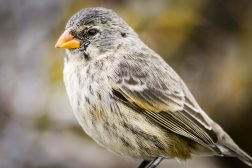Definition
noun
A taxonomic class belonging to the phylum Platyhelminthes (flatworms) characterized by having a body covered externally with vibrating cilia
Supplement
The phylum Platyhelminthes (flatworms) is comprised of parasitic worms characterized mainly by their flattened, bilaterally symmetrical body. This phylum includes the four classes: (1) Turbellaria, (2) Trematoda, (3) Monogenea, and (4) Cestoda.
Turbellaria is comprised of flatworm species (turbellarians) that are not exclusively parasitic and possess a body covered externally with vibrating cilia. They have flat, ribbon-like, or leaf-like shapes. Other characteristics that turbellarians share with other Platyhelminthes are as follows: (1) bilateral symmetry, (2) reliance on diffusion for internal transport of metabolites due to the absence of specialized respiratory and circulatory systems, (3) being tripoblastic, (4) lacking in internal body cavity (thus, are acoelomates), and (4) undigested material being regurgitated through the mouth due to lack of anus.
There are about 4,500 turbellarians identified.1 The taxonomic class includes the Rhabdocoela and Dendrocoela. Formerly, the nemerteans were included in this group. Many of them are free-living. Others are parasitic.
Word origin: Latin turbellaria, Latin turbellae (“bustle”), turba (“confusion”)
Scientific classification:
- Kingdom: Animalia
- Phylum: Platyhelminthes
- Class: Turbellaria Ehrenberg, 1831
Common name:
- turbellarian
See also:
- Platyhelminthes
- flatworm
Reference(s):
1 Ruppert, E. E., Fox, R. S., & Barnes, R.D. (2004).Invertebrate Zoology (7 ed.). Brooks / Cole. pp. 226–269.







